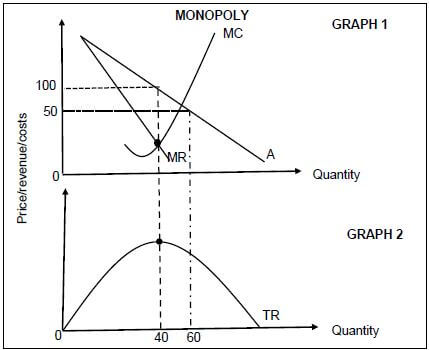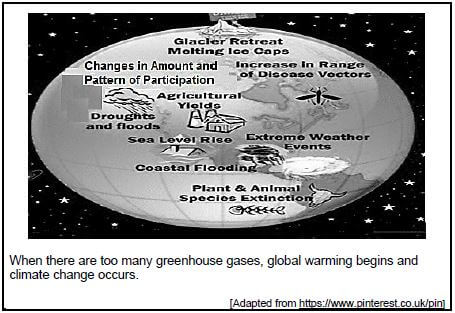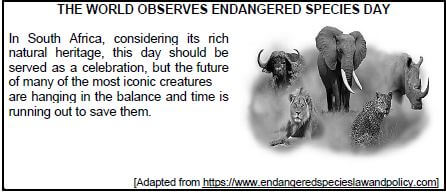Economics P2 Grade 12 Questions - NSC Exams Past Papers and Memos September 2019 Preparatory Examinations
Share via Whatsapp Join our WhatsApp Group Join our Telegram GroupINSTRUCTIONS AND INFORMATION
- Answer FOUR questions as follows in the ANSWER BOOK:
- SECTION A: COMPULSORY
- SECTION B: Answer TWO of the three questions.
- SECTION C: Answer ONE of the two questions.
- Answer only the required number of questions. Answers in excess of the required number will NOT be marked.
- Number the answers correctly according to the numbering system used in this question paper.
- Write the number of the question above each answer.
- Read the questions carefully.
- Start EACH question on a NEW page.
- Leave 2–3 lines between subsections of questions.
- Answer the questions in full sentences and ensure that the format, content and context of your responses comply with the cognitive requirements of the questions.
- Use only black or blue ink.
- You may use a non-programmable pocket calculator.
- Write neatly and legibly.
QUESTIONS
SECTION A (COMPULSORY)
QUESTION 1 30 MARKS – 20 MINUTES
1.1 Various options are provided as possible answers to the following questions. Choose the answer and write only the letter (A–D) next to the question number (1.1.1–1.1.8) in the ANSWER BOOK, for example 1.1.9 D.
1.1.1 The elements of a market … include the number of sellers, nature of the product and the extent of differentiation.
- power
- structure
- system
- equilibrium
1.1.2 A(n) … monopoly occurs when a single firm controls manufacturing methods to produce a certain product.
- geographical
- technical
- artificial
- state-owned
1.1.3 In an oligopoly one firm’s actions affect decisions of other competing firms, meaning these firms are …
- unique.
- powerful.
- interdependent.
- special.
1.1.4 Producers make use of … to make their products appealing to the consumers.
- packaging
- prices
- branding
- services
1.1.5 The state can play a significant role in maintaining environmental sustainability through …
- marketing.
- externalities.
- exports.
- taxation.
1.1.6 CPIX is the inflation rate that excludes interest rates on … bonds.
- municipal
- treasury
- government
- mortgage
1.1.7 People travelling through South Africa to get to another country are called … tourists.
- outbound
- inbound
- transit
- domestic
1.1.8 Finite resources are also known as … resources.
- non-renewable
- renewable
- non-depleted
- limitless (8 x 2) (16)
1.2 Choose a description from COLUMN B that matches an item in COLUMN A. Write only the letter (A–I) next to the question number (1.2.1–1.2.8) in the ANSWER BOOK, for example 1.2.9 K.
| COLUMN A | COLUMN B |
1.2.1 Market price |
|
(8 x 1) (8)
1.3 Give ONE term for each of the following descriptions. Write only the term next to the question number (1.3.1–1.3.6) in the ANSWER BOOK.
Abbreviations, acronyms and examples will NOT be accepted.
1.3.1 The actual cost that a business incurs in conducting an activity, e.g. salaries, wages, materials etc.
1.3.2 The period during which all factors of production are variable
1.3.3 The cost or benefit of a transaction that affects economic agents who are not directly involved in the transaction
1.3.4 A continuous decrease in the general prices of goods and services
1.3.5 A landmark or area which is selected by the United Nations as having cultural, historical or other form of significance
1.3.6 The variety of plant and animal life in a particular habitat (6 x 1) (6)
TOTAL SECTION A: 30
SECTION B
Answer any TWO of the three questions from this section in your ANSWER BOOK.
QUESTION 2: MICROECONOMICS 40 MARKS – 30 MINUTES
2.1 Answer the following questions.
2.1.1 Give TWO examples of variable costs. (2)
2.1.2 Why are individual market participants in a perfect market insignificant to the market as a whole? (2)
2.2 Study the graph below and answer the questions that follow. 
2.2.1 Provide a suitable label for curve A. (1)
2.2.2 What is the selling price for the business above? (1)
2.2.3 Briefly describe the term monopoly. (2)
2.2.4 Explain a reason for the shape of the total revenue curve. (2)
2.2.5 Redraw Graph 1 in your ANSWER BOOK and show how the monopoly will make economic profits. (4)
2.3 Read the extract below and answer the questions that follow.
COMPETITION POLICY AND SECTOR SPECIFIC REGULATIONS Competition policy and regulation are often regarded as two important and inter-related areas of regulatory policy. The policies are designed to address weaknesses within the market system. If used efficiently and complementary to each other, competition policy and regulation can both play a key role in improving the quality of regulation thus creating competitive markets. The policy uses three authorities; the Competition Commission, Competition Tribunal and the Competition Appeal court. [Adapted from www.law.ufi.edu] |
2.3.1 Name the market structure that led to the implementation of a competition policy. (1)
2.3.2 Which institution provides final decisions when parties are dissatisfied with rulings of the Competition Tribunal? (1)
2.3.3 Briefly describe the term regulation in economics. (2)
2.3.4 What is the role of the Competition Commission? (2)
2.3.5 Why is it important for the South African government to control competition among businesses? (2 x 2) (4)
2.4 Briefly explain entry and perfect knowledge as characteristics of a perfect competitor. (2 x 4) (8)
2.5 What positive impact will an increase in suppliers of electricity have on South Africa? (8) [40]
QUESTION 3: CONTEMPORARY ECONOMIC ISSUES
40 MARKS – 30 MINUTES
3.1 Answer the following questions.
3.1.1 Name any TWO negative effects of tourism. (2)
3.1.2 Why is the preservation of natural resources important? (2)
3.2 Study the information below and answer the questions that follow.
NUMBER OF MOST RECENT DAY AND OVERNIGHT TRIPS INSIDE SOUTH AFRICA: JANUARY – JUNE 2018
TOTAL NUMBER OF TRIPS (‘000) | ||
TYPE OF TRIP | QUARTER 1 | QUARTER 2 |
Day trip in SA | 3 825 | 4 284 |
Overnight trip in SA | 6 300 | 6 351 |
The number of most recent day trips increased from 4,0 million to 4,3 million between the two quarters of 2018. The number of most recent overnight trips slightly increased from 6,3 million in Quarter 1 to 6,4 million in Quarter 2.
[Adapted from StatsSA survey 2018]
3.2.1 Name the economic sector that is represented by tourism. (1)
3.2.2 Which type of tourism is depicted in the data above? (1)
3.2.3 Briefly explain the term tourism. (2)
3.2.4 Explain a reason for the growth of foreign tourism in South Africa. (2)
3.2.5 How can tourism alleviate poverty in rural areas? (2 x 2) (4)
3.3 Study the information below and answer the questions that follow. 
3.3.1 Name the organisation which has facilitated a number of agreements regarding the disposal of toxic chemical waste. (1)
3.3.2 What could be the cause of global warming? (1)
3.3.3 Briefly describe the term climate change. (2)
3.3.4 Why does the government provide environmental subsidies to businesses? (2)
3.3.5 How are farmers affected by acid rain? (4)
3.4 Briefly explain the economic benefits of tourism for the government. (8)
3.5 How can environmental degradation be prevented? (8) [40]
QUESTION 4: MICROECONOMICS AND CONTEMPORARY ECONOMIC ISSUES
40 MARKS – 30 MINUTES
4.1 Answer the following questions.
4.1.1 Name any TWO major international protocols and agreements on sustainable development. (2)
4.1.2 How are consumers affected by maximum prices? (2)
4.2 Study the information below and answer the questions that follow. 
4.2.1 What is the nature of the service offered by the firms above? (1)
4.2.2 How is the shape of the demand curve of the oligopoly? (1)
4.2.3 Briefly describe the term oligopoly. (2)
4.2.4 What does it mean for Vodacom to be a dominant firm? (2)
4.2.5 How do oligopoly competitors benefit from collusion? (4)
4.3 Study the information below and answer the questions that follow. 
4.3.1 What is the group of animals in the picture above called? (1)
4.3.2 Which international treaty is concerned with endangered species? (1)
4.3.3 Briefly describe the term endangered species. (2)
4.3.4 How can education be used as a measure to ensure sustainability? (2)
4.3.5 Why were the Millennium Development Goals not achieved? (4)
4.4 With the aid of a well-labelled graph, explain economic loss in a perfect market. (8)
4.5 Examine the success of marketing as a strategy to promote tourism in South Africa. (8) [40]
TOTAL SECTION B: 80
SECTION C
Answer ONE of the two questions from this section in the ANSWER BOOK.
Ensure that your answer follows the structure indicate below in order to obtain maximum marks.
STRUCTURE OF ESSAY | MARK |
Introduction
| Max. 2 |
Body Additional part: Give own opinion/Critically discuss/Evaluate/Critically evaluate/Draw a graph and explain/Use the graph given and explain/Complete the given graph/Calculate/Deduce/Compare/Explain/Distinguish/Interpret/ Briefly debate/How/Suggest | Max. 26 Max. 10 |
Conclusion
| Max. 2 |
TOTAL | 40 |
QUESTION 5: MICROECONOMICS
40 MARKS – 40 MINUTES
- Discuss the causes of market failure in detail focusing on the following:
- Missing markets
- Lack of information (26 marks)
- Evaluate the success of the government intervention in markets in distributing wealth. (10 marks) [40]
QUESTION 6: CONTEMPORARY ECONOMIC ISSUES
40 MARKS – 40 MINUTES
- Examine in detail the causes of cost-push inflation. (26 marks)
- How effective are interest rates in combating inflation since the introduction of inflation targeting? (10 marks)
[40]
TOTAL SECTION C: 40
GRAND TOTAL: 150